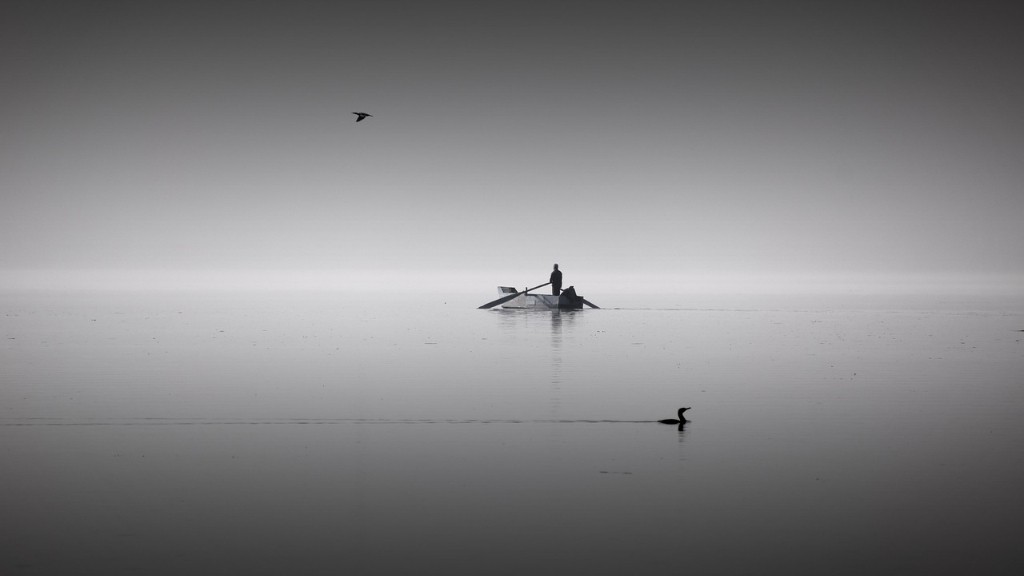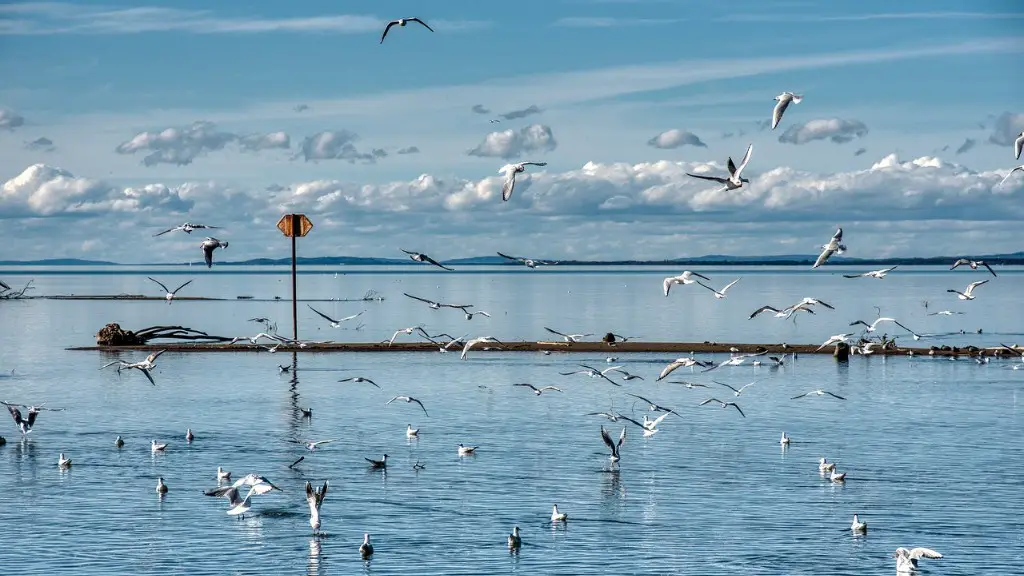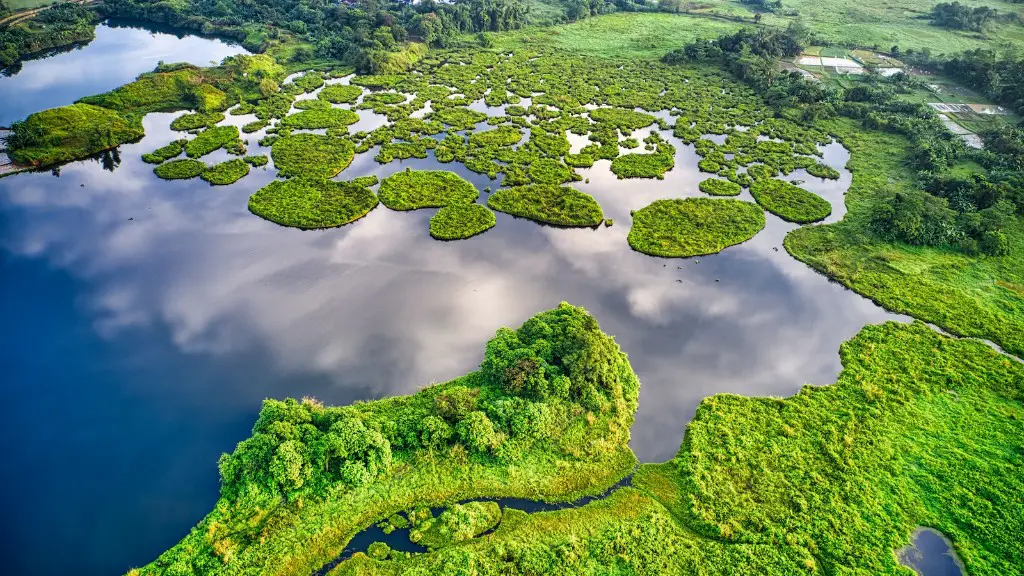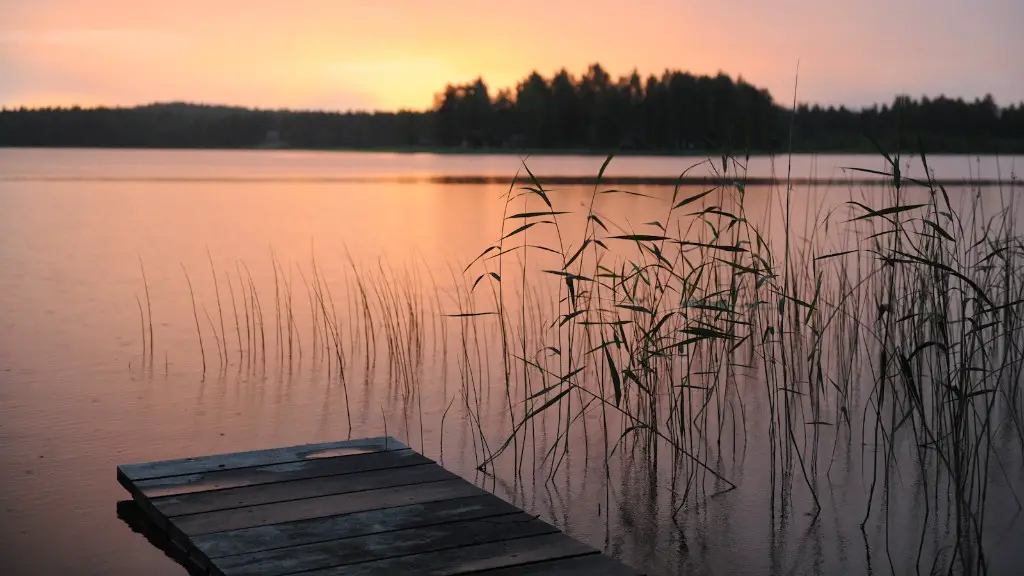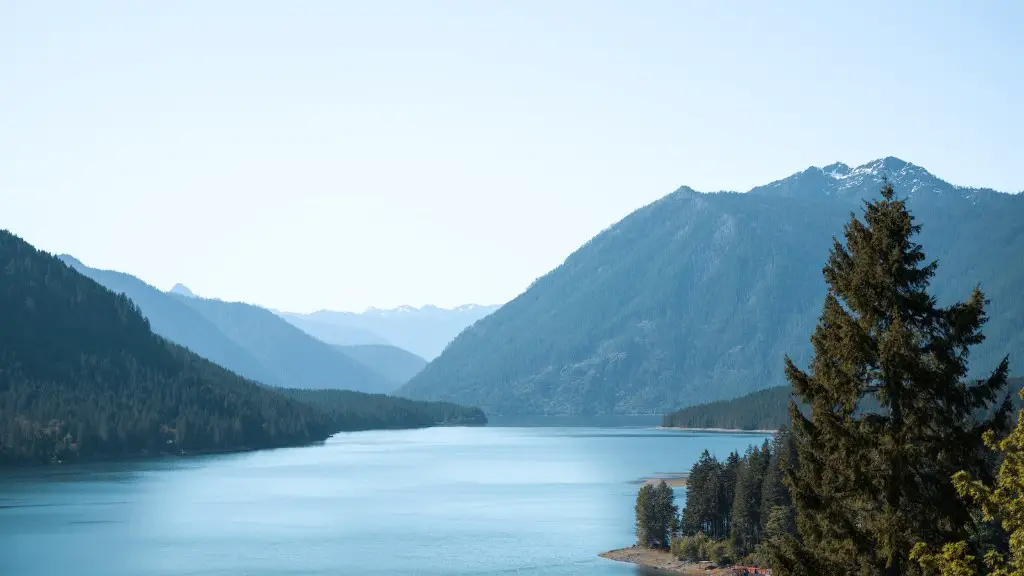Lake Victoria is the largest lake in Africa and one of the most prominent features in the continent. Located in the east of the continent, Lake Victoria is shared by Kenya, Tanzania and Uganda and has a surface area of approximately 2,600 square miles. It is not only one of the largest bodies of freshwater in Africa, but also one of the most important for African countries.
The lake can trace its origins back millions of years ago when it was formed by the rifting of the Great Rift Valley. During the Pleistocene period, the lake filled with water from the Nile catching basin and from the surrounding tributaries and rainwater. Since the formation of Lake Victoria, it has been providing water and resources to the African countries surrounding it.
For many years, Lake Victoria has been an important source of food and livelihood for local communities in East Africa. The lake has also served as an important source of motorized transport and has become an integral part of the fishing, trading, and transportation network in the region. Additionally, the lake encourages tourism and offers the opportunity for recreation such as swimming, boating and fishing.
Despite the economic importance of the lake, there are several challenges that both the government and citizens living around the lake will need to address in order to ensure the sustainability of its resources. Environmental degradation has been occurring at an alarming rate in and around the lake due to human exploitation, habitat destruction, and pollution from industries, which has lead to a decline in the biodiversity of the lake.
Furthermore, climate change has been a major problem in the region, with Lake Victoria being the most prone to experiencing extreme droughts and floods due to changing temperatures and rainfall patterns. Additionally, increased development such as urbanization and deforestation has caused water runoff and sediment build-up, impacting the water quality and negatively affecting the livelihoods of local communities.
In order to preserve the lake, conservation efforts have been put in place to tackle these issues. Several laws have been put in place by the governments of the countries surrounding the lake to ensure sustainable exploitation of the resource. Additionally, environmental education campaigns and initiatives have been set up to raise awareness and understanding of the impacts of environmental degradation, as well as to educate communities on land and water management practices.
The future of Lake Victoria is in our hands. With proper management and conservation strategies, the lake can continue to be a major source of livelihood and sustainability for the local communities that rely heavily on Lake Victoria’s resources.
Invasive Species
In recent years, Lake Victoria has faced a serious issue concerning the introduction of invasive species. Non-native species like the Nile Perch and Tilapia have been introduced to the lake and have caused serious damage to the existing flora and fauna. The Nile Perch, for example, has been responsible for depleting the populations of the native species, leading to a dramatic decline in fish stocks.
Furthermore, some plant species have been introduced to the lake, such as the Water Hyacinth, which has become a major pest in the region. The plant has spread rapidly in the lake and has blocked waterways, impeding fish migration and making it harder for communities to access fishing grounds.
In order to prevent the continuous destruction caused by invasive species, governments and organizations are working on eradication initiatives. Several plans and strategies have been implemented to tackle the issue, such as the introduction of biocontrol agents that are effective in controlling the invasive plant species. Additionally, campaigns have been launched to raise awareness and understanding of the dangers of introducing non-native species to the lake.
Despite the efforts to tackle the problem of invasive species, the situation is still dire and more needs to be done in order to ensure the preservation of the lake and the well-being of the local communities that rely on Lake Victoria.
Pollution in Lake Victoria
The immense growth of industries and urbanization in the Lake Victoria region have resulted in high levels of pollution in the lake. Chemical and industrial runoff are polluting the lake at alarming rates, leading to the destruction of habitats and the death of aquatic species. Additionally, the lake has become a dumping ground for many pollutants such as chemical waste, fuel and agricultural runoff, leading to the exacerbation of the problem.
The issue of pollution in the lake is further complicated by poor waste management practices in the local communities. Typically, solid and hazardous waste that is generated by households and industries is disposed of in the lake, leading to further degradation of the water quality.
In order to address this issue, the governments of the countries surrounding the lake have implemented various policies, such as the East African Community Marine Waste Management Strategy, which aims to reduce the pollution of the lake. Additionally, the government has been promoting other initiatives such as the adoption of sustainable waste management practices by industries and by communities.
Despite the efforts to address this issue, there is still more work to be done to ensure the sustainability of the lake and the well-being of the local communities.
Impact on Livelihoods
Lake Victoria is an important source of livelihood for the people living in the surrounding countries. Apart from providing water for agricultural activities, the lake also serves as a source of food, with fish and other aquatic species being a major component in the local diets. Additionally, the lake is an important source of income for many, with many local communities relying heavily on fishing and fish trading for their daily needs.
However, in recent years, the livelihoods of the local communities has come under threat due to the decrease in fish stocks in the lake. Overfishing by large-scale industrial operations and unsustainable fishing practices has been largely responsible for the decrease in the number of fish, making it harder for local communities to sustain themselves.
In order to ensure the sustainability of Fish stocks in the lake and the livelihoods of the local communities, the governments of the countries have implemented various policies and laws to manage and control fishing activities. Additionally, campaigns have been set up to promote sustainable fishing practices, mainly targeting small-scale local fishermen.
Despite these efforts, there is still more work to be done to ensure the sustainability of the lake and the livelihoods of the local communities.
Ecosystem Services
Lake Victoria plays a vital role in the ecosystem of the region, providing a range of essential services to the local communities. The lake serves as a natural buffer from floods, protecting the surrounding communities from floods and protects the surrounding areas from storms. Additionally, the lake serves as an important source of drinking water and provides water for irrigation and industrial activities.
Moreover, the lake is an important habitat for many species of flora and fauna, providing a home for many endangered species. The lake also serves as a breeding ground for many species of fish, helping to replenish fish stocks. Additionally, the lake provides recreational activities such as swimming and boating and is an important source of livelihood for local communities.
Despite the immense importance of the lake, ecosystem services are under threat due to environmental degradation and climate change. Increasing levels of pollution and changing temperature and rainfall patterns have led to the death of aquatic species and the destruction of habitats, making it harder for the local communities to access the resources of the lake.
In order to ensure the preservation of the lake and the ecosystem services it provides, governments and organizations are working to conserve the lake’s resources. Several plans and strategies have been put in place to address the issue of environmental degradation and climate change and raise awareness and understanding of their impacts. Additionally, conservation initiatives have been set up to help restore and protect the ecosystems of the lake.
Although there are conservation efforts in place, more needs to be done to ensure the preservation of Lake Victoria and the ecosystem services it provides.
